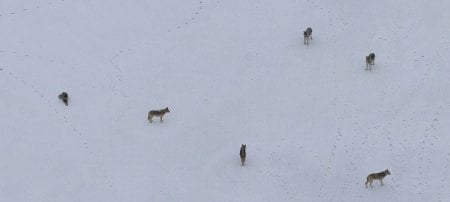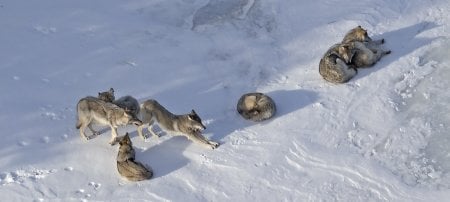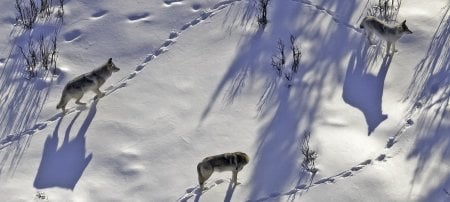What Should Be Done About the Disappearing Wolves of Isle Royale?

The number of wolves at Isle Royale National Park has dipped to nine—the lowest number seen since Michigan Technological University’s wolf-moose predator-prey study began 54 years ago. What should be done if this furry icon of wilderness culture dies out altogether?
Michigan Tech researchers John Vucetich and Rolf Peterson and Michigan State University environmental ethicist Michael Nelson tackle this controversial subject in an article in the March 2012 issue of the George Wright Forum, a conservation journal.
The issue is a prickly one because there is conflict among environmentalists and ethicists about how we should—or should not—relate to nature and the environment. Some say, “let nature take its course.” Others believe humans should work to maintain ecosystem health, and that may on some occasions require intervention.
“The appropriate approach is to acknowledge and understand all the values at stake, and then develop a perspective or position that would least infringe upon that set of values,” say Vucetich, Peterson and Nelson.
A central management principle of wilderness policy is non-intervention. Non-intervention is preferable to humans’ tendency to try to control nature, its advocates say. Non-intervention can help maintain natural conditions and the character of natural landscapes.
However, even according to established wilderness policy, non-intervention is not necessarily the best management option when “nature’s course” has already been altered by humans, the authors say. Intervention may be necessary for maintaining ecosystem health.
In the case of Isle Royale, the wolves have been affected by disease and climate change. And humans have had a hand in these influences. A pet dog brought to the island by a visitor in the 1980s set canine parvovirus loose, nearly wiping out the wolves. Reverberations of that population crash persist to the present day. Climate change, which few dispute has been caused in part by human actions, likely exacerbate the impact of winter ticks, resulting in a significant decline in the moose population, the wolves’ primary food source. It also decreases the possibility that another ice bridge might form between Canada and Isle Royale, making very unlikely even the possibility of new wolves crossing to the island with the effect of improve genetic diversity.
“Humans exacerbated the extinction risk of wolves and significantly reduced the chances of natural recolonization. Because of this, intervention would enhance and honor the wilderness values of Isle Royale,” the authors say.
In addition to the questions that arise from principles of non-intervention, the authors suggest the need to also consider the cost of sacrificing the longest predator-prey study ever conducted.
There are three possible kinds of intervention that could save the wolves of Isle Royale:
- Wolf reintroduction—reintroducing wolves if the present wolf population were to go extinct.
- Female reintroduction—reintroducing female wolves when all present females have gone extinct.
- Genetic rescue—introducing new wolves on Isle Royale while some of the present population remains, to broaden and strengthen the gene pool.
If the wolves are allowed to go extinct, the moose population on the remote island will grow unimpeded, until the moose strip the island of its vegetation and eventually, starve.
“The bottom line is, as long as there are moose there, keep the wolves there,” says Vucetich.
“All things considered, if the wolves go to extinction, reintroduce them,” Peterson concludes.
Michigan Technological University is an R1 public research university founded in 1885 in Houghton, and is home to nearly 7,500 students from more than 60 countries around the world. Consistently ranked among the best universities in the country for return on investment, Michigan's flagship technological university offers more than 120 undergraduate and graduate degree programs in science and technology, engineering, computing, forestry, business, health professions, humanities, mathematics, social sciences, and the arts. The rural campus is situated just miles from Lake Superior in Michigan's Upper Peninsula, offering year-round opportunities for outdoor adventure.




Comments